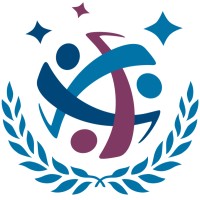Company Cyber Security Posture
NANA
NA Company Details
NA
NA
NA
NA
NA
NA
Scan still pending
NA
NA
Between 200 and 800
This score is AI-generated and less favored by cyber insurers, who prefer the TPRM score.
 NA Global Score
NA Global Score.png)

Company Scoring based on AI Models
| Model Name | Date | Description | Current Score Difference | Score |
|---|---|---|---|---|
| AVERAGE-Industry | 03-12-2025 | This score represents the average cybersecurity rating of companies already scanned within the same industry. It provides a benchmark to compare an individual company's security posture against its industry peers. | N/A | Between 200 and 800 |
Company Cyber Security News & History
| Entity | Type | Severity | Impact | Seen | Url ID | Details | View |
|---|
Company Subsidiaries

NA
Access Data Using Our API

Get company history
.png)
NA Cyber Security News
Collins Aerospace to support avionics software cyber security on E-6B nuclear command-and-control aircraft
VLF radio signals provide good performance in atmospheric noise, global coverage, and seawater-penetrating properties. The submarine VLF ...
Scattered Spider strikes again? Aviation industry appears to be next target for criminal group
The aviation industry has seemingly become the latest target of Scattered Spider, a sophisticated cybercriminal group that has shifted its focus ...
FAA Awards Embry-Riddle’s Center for Aerospace Resilient Systems $1.3 Million to Boost Cybersecurity
FAA Awards Embry-Riddle's Center for Aerospace Resilient Systems $1.3 Million to Boost Cybersecurity.
Why the Aviation Industry Needs Robust Cybersecurity Strategies
Aviation is a key pillar of the global economy, linking millions of people every day. However, the growing reliance on digital technology in ...
Cybersecurity in the Skies
Cybersecurity aims to prevent events like these. Cyberattacks are one of the top concerns for the aviation industry, and it is imperative for ...
Airplane cybersecurity: Past, present, future
With most aviation processes now digitized, airlines and the aviation industry as a whole must prioritize cybersecurity.
Cyber threats in the aviation industry
The aviation industry has seen a surge in ransomware attacks in recent years and cyber incidents are a serious threat to business continuity ...
FAA awards Embry-Riddle CARS contract to research aviation cybersecurity
Research focuses on new methods for improving aviation cybersecurity through data science, artificial intelligence, and machine learning.
Aviation Cybersecurity: Risks and Mitigations
Cyberspace today is a world bombarded by cybercriminals attempting to hijack valuable information capable of bringing an individual, company or even a ...

NA Similar Companies

Airbus Helicopters
Airbus is a leader in designing, manufacturing and delivering aerospace products, services and solutions to customers on a worldwide scale. Airbus strives to provide the most efficient helicopter solutions to its customers who serve, protect, save lives and safely carry passengers in demanding envi

Safran
Safran is an international high-technology group, operating in the aviation (propulsion, equipment and interiors), defense and space markets. Its core purpose is to contribute to a safer, more sustainable world, where air transport is more environmentally friendly, comfortable and accessible. Safran

Dassault Aviation
Dassault Aviation is a French aerospace company that shapes the future by designing and building military aircraft, business jets and space systems. Leader on the New Generation Fighter developed within the joint European program FCAS (Future Combat Air System) Designer and manufacturer of the Raf

Airbus
Airbus pioneers sustainable aerospace for a safe and united world. The Company constantly innovates to provide efficient and technologically-advanced solutions in aerospace, defence, and connected services. In commercial aircraft, Airbus designs and manufactures modern and fuel-efficient airliners

NASA - National Aeronautics and Space Administration
For more than 60 years, NASA has been breaking barriers to achieve the seemingly impossible—from walking on the Moon to pushing the boundaries of human spaceflight farther than ever before. We work in space and around the world in laboratories and wind tunnels, on airfields and in control rooms to e

Space Generation Advisory Council
The Space Generation Advisory Council in support of the United Nations Programme on Space Application (SGAC) is a non-governmental organisation which aims to represent students and young space professionals to the United Nations, States, and space agencies. SGAC has permanent observer status in the

Frequently Asked Questions
Explore insights on cybersecurity incidents, risk posture, and Rankiteo's assessments.
NA CyberSecurity History Information
How many cyber incidents has NA faced?
Total Incidents: According to Rankiteo, NA has faced 0 incidents in the past.
What types of cybersecurity incidents have occurred at NA?
Incident Types: The types of cybersecurity incidents that have occurred include .
Additional Questions
What Do We Measure?
















Every week, Rankiteo analyzes billions of signals to give organizations a sharper, faster view of emerging risks. With deeper, more actionable intelligence at their fingertips, security teams can outpace threat actors, respond instantly to Zero-Day attacks, and dramatically shrink their risk exposure window.
These are some of the factors we use to calculate the overall score:
Identify exposed access points, detect misconfigured SSL certificates, and uncover vulnerabilities across the network infrastructure.
Gain visibility into the software components used within an organization to detect vulnerabilities, manage risk, and ensure supply chain security.
Monitor and manage all IT assets and their configurations to ensure accurate, real-time visibility across the company's technology environment.
Leverage real-time insights on active threats, malware campaigns, and emerging vulnerabilities to proactively defend against evolving cyberattacks.




